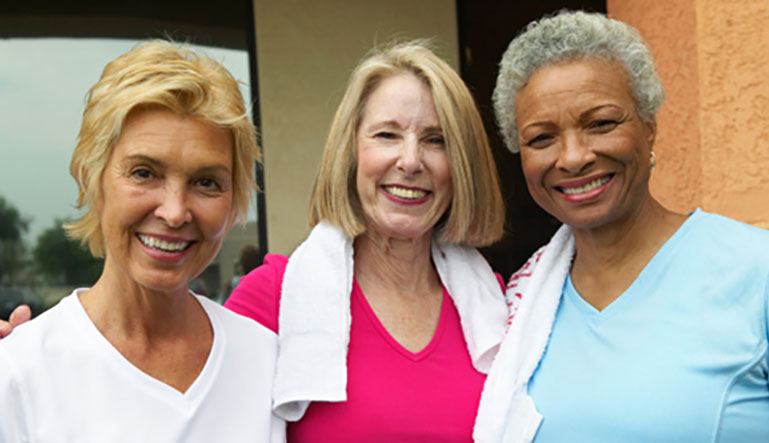It happens to every golfer. A slip in the grip, an awkward stance, or just a break in focus on a drive and the ball flies into a bunker. No matter the age or skill level of the golfer, control of the swing is everything. Losing that control can be frustrating and keep you from reaching your goal. That rings true in life, too. As we age, physical and mental limitations can lead to a feeling of losing control of the things in life you love, like your senior independence.
Here’s the good news. Independence doesn’t have an age limit. By taking certain steps, older adults can maintain their independence for as long as possible. Ready to take control of your independence? Here are five things you can do to live life to your fullest for years to come.
Live On Your Own Terms, With a Little Help
There are many things to love about owning your own home as an older adult. You can decorate it however you like, do things on your own schedule, and maintain it as you see fit. However, there are many parts of home ownership that are…not so great. Appliances break, roofs leak, and cooking all your meals can start to feel like a chore. Good thing there’s a better way. Independent living at a Five Star Senior Living community offers everything you love about having your own place, without the hassle of annoying home maintenance and other obligations. Since most services and amenities at Five Star are provided, like landscaping, transportation options, and fine dining, you can focus on doing your favorite things and living carefree.
Focus on Therapy and Fitness
Seniors know it well, all those aches and pains that make it hard to do all the activities you love, whether it’s a game of pickleball or just a walk around the park. There’s nothing worse than being stuck on the sidelines due to a bad back or another chronic ailment. Physical therapy and fitness might be the answer. Regular therapy and fitness training can help you relieve pain, prevent injury and gain control of your body. At Ageility clinics located in many Five Star communities, therapy and fitness focused treatment plans have been proven to improve strength and balance in residents so they can stay on their feet, and control that golf swing, for longer.
Keep Your Mind Sharp
The brain is a muscle, and just like the rest of your body, it requires regular exercise to keep it in tip top shape. Brain deterioration is a very real threat for older adults and can lead to memory loss and can cause dementia. Some simple and powerful ways to keep your brain engaged is to challenge it with a change to your routine, like starting a new hobby or participating in a new activity. Either is easy to do when you move into a Five Star community. No matter your lifestyle and interests, Five Star offers a whole host of unique activities, clubs, and experiences to explore and reignite your mind like painting classes, lecture series, visits to local cultural sites, and many more.
Stay Connected to Maintain Senior Independence
It may sound like an oxymoron, but one of the best ways for older adults to maintain senior independence is by staying social. Building strong relationships and meaningful social connections can give you a greater feeling of purpose and belonging, which in turn can boost your overall health and quality of life. Staying connected can be difficult when living on your own and you’re not as mobile as you once were. At Five Star, you’re invited in like family from the moment you arrive and everyday offers an opportunity to make new friends over drinks at Happy Hour or gather with them for a classic flick at the movie theater. The best part? You can choose to be as social, or not, as you like. Who says you can’t be an independent social butterfly?
Want to Maintain your Senior Independence? Make Your Voice Heard
Everyone has their own opinions and preferences for what they like to eat, wear, do, etc. For older adults, it can feel like your dignity and the freedom to make your own choices is slowly being lost as others start to make choices for you. Five Star knows that you have the ultimate say in how you want to live out your golden years. That’s why each day at a Five Star community is a choose your own adventure where you can do as you please. Is there a favorite dish that’s not on the menu or activity that’s missing from the community’s offerings? Make your voice heard and you may just see that beloved family recipe on the menu or run your very own club. When you speak at Five Star, you’re listened to, and given the freedom to choose for yourself.
No matter what stage of life you’re in, maintaining the ability to chart your own course and live, as Frank Sinatra sings, “My Way,” is a deeply held value. What’s important to remember is, there are actions you can take to maintain your independence for as long as possible, whether that’s starting a regular exercise routine or moving into a Five Star Senior Living community. The best is yet to come. It should be what you make of it.
If you or a loved one is searching for a senior living community that offers an independent lifestyle, consider all that Five Star Senior Living has to offer. Find a senior living community near you today!
Contact Us Today
"*" indicates required fields










